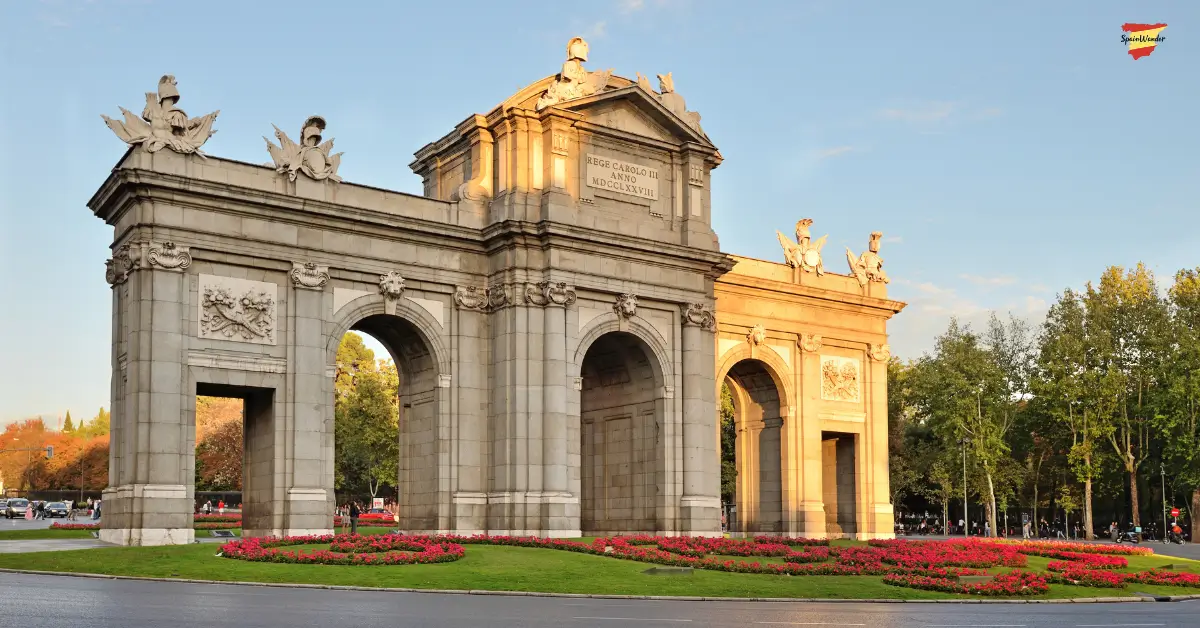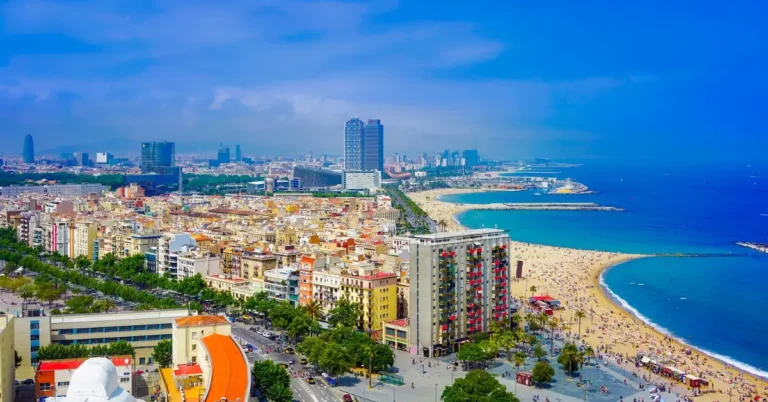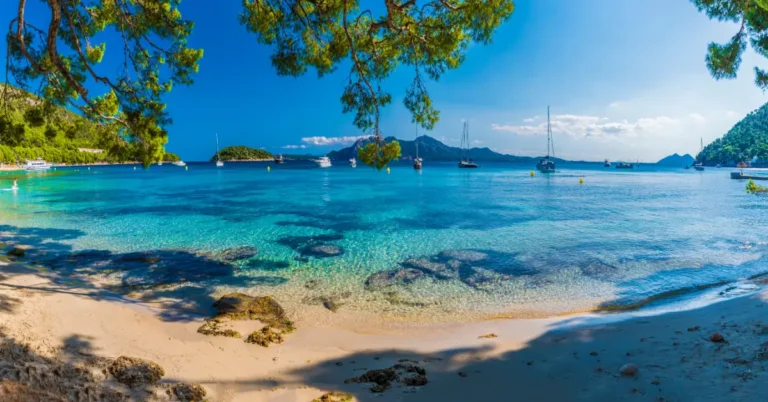Discover the Best Places to Travel in Spain
What if you could experience ancient history, vibrant culture, and breathtaking landscapes all in one country? Spain isn’t just a place to visit; it’s a mix of experiences that will change the way you see the world.
From sun-drenched Mediterranean shores to UNESCO-listed cities, this nation pulses with energy. Imagine strolling through cobblestone streets where Gothic cathedrals stand beside avant-garde architecture. Or savoring tapas in a bustling plaza as flamenco rhythms echo nearby.
Spain’s charm lies in its contrasts. One day, you’re exploring Roman ruins; the next, you’re lounging on golden beaches. It’s this blend of old and new—one Spain—that captivates travelers from the United States seeking authenticity and adventure.
Ready to dive deeper? This guide unlocks hidden gems and the best places to travel in Spain, paired with local insights to elevate your journey. Whether you crave artistic masterpieces or coastal escapes, you’ll find inspiration at every turn.
Table of Contents
Why Spain Should Be Your Next Destination
Spain’s allure isn’t just in its sights but in the stories etched into its streets. Roman aqueducts cast shadows over buzzing cafés, while Moorish palaces stand minutes from cutting-edge galleries. It’s a land where every turn reveals layers of history colliding with contemporary energy — a hallmark of the best places to travel in Spain.
Rich Cultural Heritage and Timeless Charm
Walk through UNESCO World Heritage Sites that feel frozen in time yet alive with local traditions. Trace your fingers along medieval stonework in Segovia or hear flamenco’s raw emotion in Andalusia’s whitewashed villages. These moments connect you to centuries of artistry and passion and define some of the best places for culture lovers to travel to in Spain.
Vibrant Cities and Hidden Villages
Madrid’s neon-lit Gran Vía thrums with nightlife, while Toledo’s labyrinthine alleys whisper tales of three coexisting faiths. Venture further to discover hidden gems like Albarracín — a village where terracotta rooftops blend into crimson cliffs. Whether you crave urban energy or rural serenity, you’ll find some of the best places to travel in Spain woven into this beautiful tapestry of contrasts.
Madrid: Experience Art, History, and Lively Tapas Culture
Madrid, the capital of Spain, is full of creativity—where you can see Goya’s art and enjoy hot garlic shrimp on a busy outdoor terrace. Madrid isn’t just a city—it’s a living gallery where every corner tells stories through Renaissance masterpieces and modern street murals. It’s no surprise Madrid ranks among the best places to travel in Spain for culture, food, and unforgettable atmosphere.
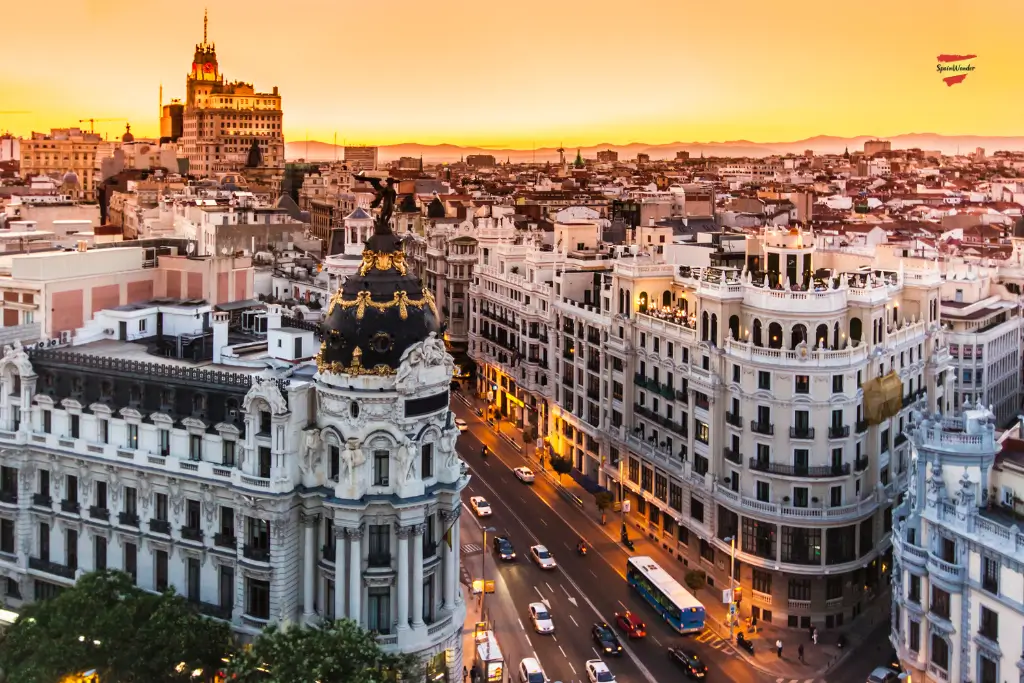
Explore the Golden Triangle of Art
Three iconic museums form Madrid’s cultural heartbeat. The Prado shows Velázquez’s powerful portraits of royalty, while the Reina Sofía impresses with Picasso’s Guernica. Walk across the street to the Thyssen-Bornemisza to explore art from old religious paintings to modern pop art. Pro tip: Buy a combined pass to skip lines and plan your visits around midday breaks
Stroll Through Historic Neighborhoods
La Latina’s cobblestone lanes burst with vermouth bars and century-old taverns. Join locals hopping between tapas spots, sampling croquetas where Cervantes once wandered. Nearby, Malasaña’s indie boutiques and neon-lit plazas reveal the city’s rebellious spirit. Don’t miss Mercado de San Miguel—iron beams frame stalls piled with Iberian ham and paprika-spiced olives.
Madrid beautifully brings together the many sides of Spain. Want morning coffee by grand Baroque buildings? You got it. Would you like to view the sunset from the Debod ancient Egyptian Temple? It’s one of the top places in Madrid to enjoy golden hour, with stunning views across the city skyline. It’s the perfect spot for golden skies and unforgettable views over Madrid. The city welcomes you to savour churros with chocolate by nightfall and explore Goya’s legacy day-wise during your trip
Barcelona: A Journey Through Modernist Masterpieces
Barcelona hums with creative electricity—a city where dragon-scaled rooftops claw at the sky and honeycomb mosaics glow under Mediterranean light. Here, Antoni Gaudí’s vivid imagination turned stone into art that feels alive. At the same time, medieval alleys hide patios steaming with fresh café con leche. It’s no wonder Barcelona is considered one of the best places to travel in Spain for art, architecture, and coastal charm.
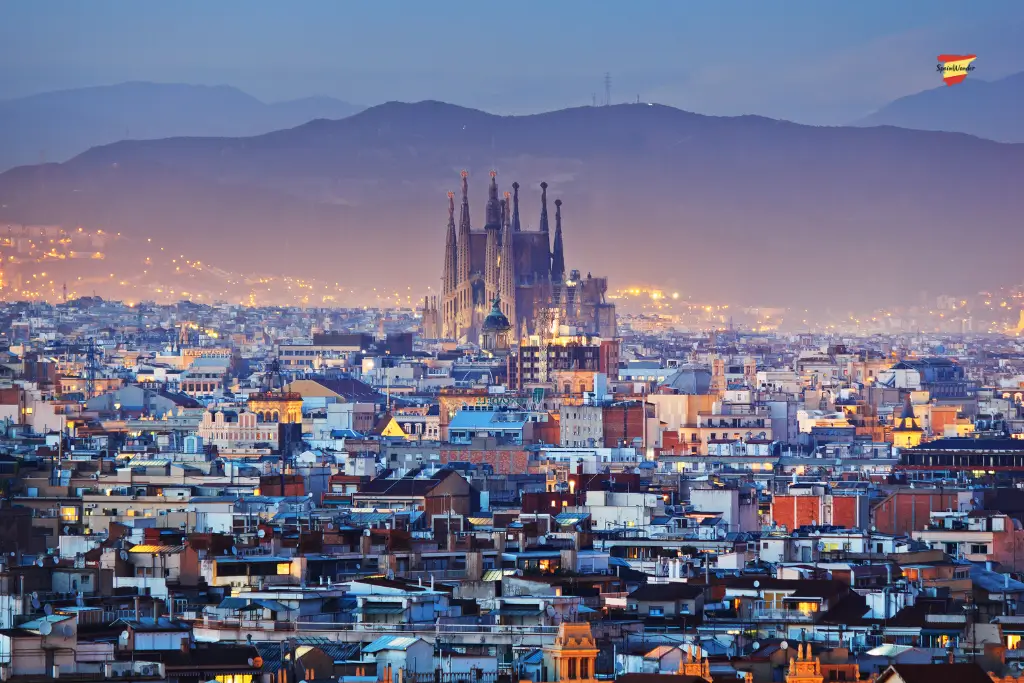
Sagrada Família and Gaudí’s Iconic Works
Step inside Sagrada Família, where sunlight fractures into rainbows through stained glass. The unfinished church by Gaudí feels alive; the columns branch out like trees, and the vaults look like the roofs of forests. Don’t miss Casa Batlló’s undulating facade or Parc Güell’s candy-colored mosaics. Book timed tickets early; lines wrap around blocks by noon.
Discover the Gothic Quarter and Local Cafés
The Gothic Quarter tells its story through ancient Roman walls and softly lit chapels. Step into Els Quatre Gats, once visited by Picasso, and enjoy churros sprinkled with cinnamon. Nearby, hop on buses to Barceloneta Beach for salty breezes and seafood paella. Evenings? Follow locals to Plaça Reial’s palm-shaded taverns.
Craving day trips? Just an hour north, the cliffside trails of Costa Brava are ready to be explored. Or ferry to the islands—Mallorca’s lemon groves or Ibiza’s hidden coves. Barcelona’s magic? It’s a place where every corner sparks discovery—whether you’re tracing Gaudí’s curves or sipping vermouth in shadowed plazas.
Cadaqués: Seaside Inspiration and Artistic Flair
Imagine a fishing village where light dances on cobalt waters, and every cobblestone whispers tales of creative genius. Cadaqués—a crescent-shaped cove on Spain’s Costa Brava—has lured artists for centuries with its hypnotic blend of rugged cliffs and serene bays. It’s one of the best places to travel in Spain for travelers seeking coastal charm and artistic heritage.
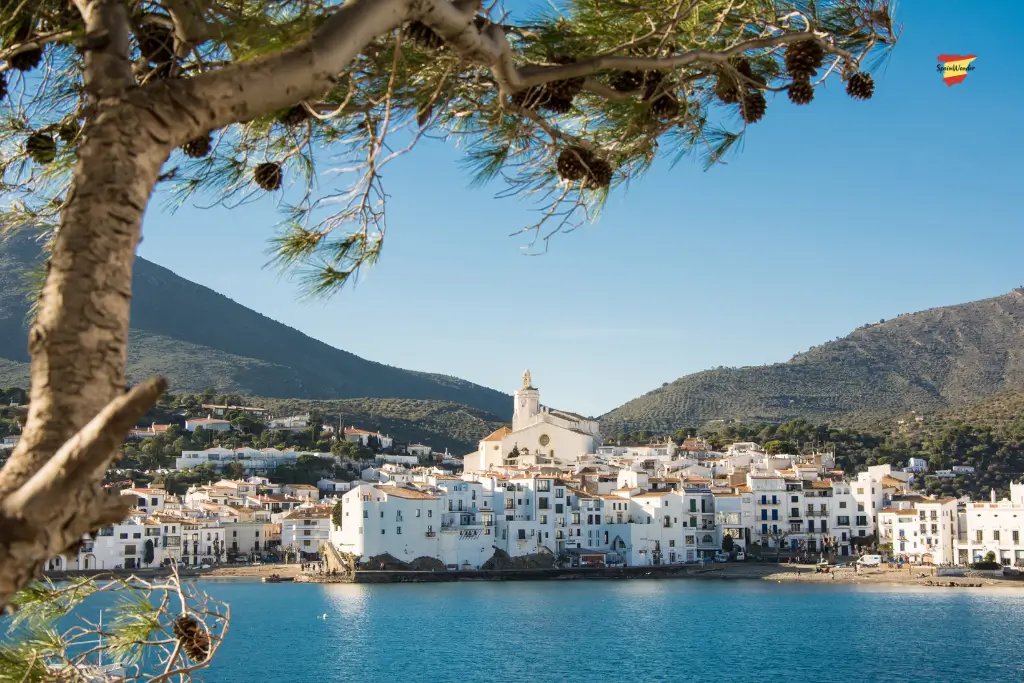
Walk in the Footsteps of Salvador Dalí
Dalí referred to this “one beautiful” paradise as home, painting its wind-twisted olive trees and glittering beaches. Visit his egg-topped house in Portlligat, which is preserved as a museum. The whitewashed houses with sea-blue shutters? They’re straight from his surrealist dreams.
Stroll to Platja Gran, where pebbles crunch underfoot and translucent waters mirror the sky. Early mornings reveal hidden gems: fishermen mending nets or sunlight hitting 18th-century Santa Maria church. Do not miss the magical scenery of Cap de Creus. This is the exact place where Dalí got the idea for his famous melting clocks.
Visit autumn or spring to dodge crowds. You’ll enjoy peaceful beaches and quiet streets where Picasso used to walk. Pro tip: Take the coastal path to Cala Nans—its turquoise inlet feels like a hidden gem even locals cherish.
Toledo: Where Three Cultures Meet and History Lives Forever
Where else can you find Roman mosaics under Moorish arches, just steps from a synagogue that became a church? Toledo—a UNESCO World Heritage site—is more than a destination; it’s a journey through time. It’s a living manuscript where Christian, Jewish, and Islamic history intertwine in every alley. If you enjoy history and cross-cultural interaction, it is also among the top destinations in Spain.
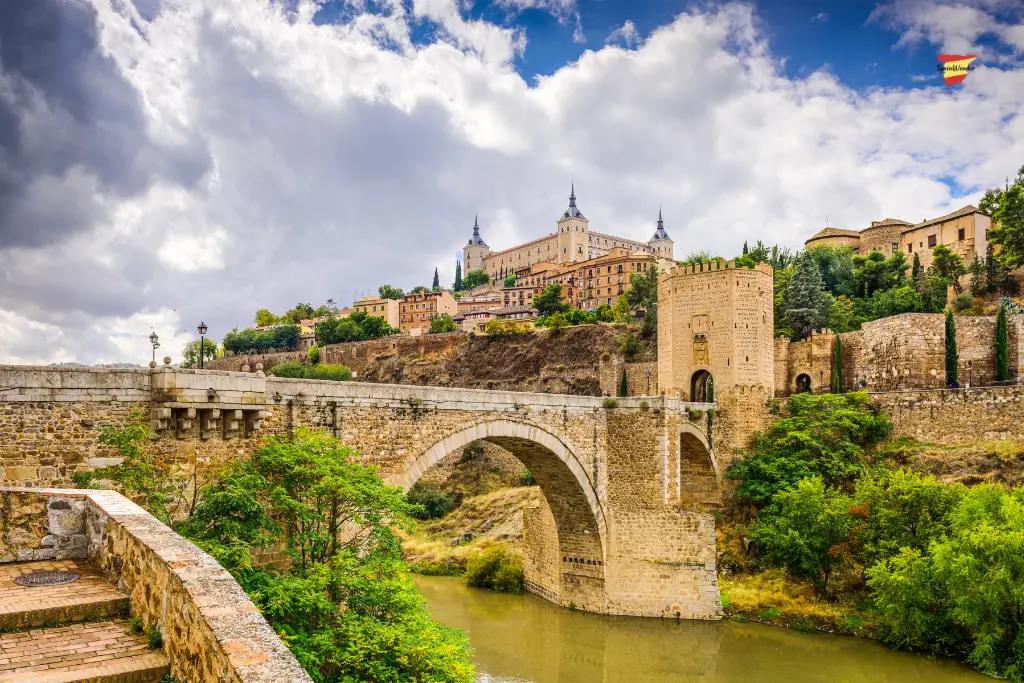
Marvel at Roman, Jewish, and Islamic Influences
The Catedral de Toledo’s Gothic spires pierce the sky, while Santa María la Blanca’s horseshoe arches whisper of its past as a synagogue. Fortress Alcázar combines the beauty of Islamic architecture with the grace of Renaissance design. This city doesn’t just display its layers—it lets you walk through them.
Wander Through Medieval Streets
Toledo’s labyrinthine streets—barely wider than your shoulders—invite slow exploration. Duck into family-run shops selling Damascene steel jewelry or almond-scented marzipan. Follow locals to Plaza de Zocodover at dusk, where the golden light mirrors El Greco’s brushstrokes.
Pro tip: Wear sturdy shoes. The cobblestones slope like time-worn staircases. Want the full story? Join a guided walk through the Jewish Quarter’s hidden courtyards. Here, every corner turns this place into a classroom without walls.
Cuenca: Breathtaking Mountain Views and the Hanging Houses
Perched high above river gorges, Cuenca feels like a medieval dream clinging to cliffs. This city merges gravity-defying architecture with raw natural beauty—one Spain where history and adventure collide. Narrow streets wind past sandstone bluffs, leading to vistas that’ll steal your breath. It’s no surprise Cuenca is considered one of the best places to travel in Spain for lovers of landscapes and off-the-beaten-path charm.
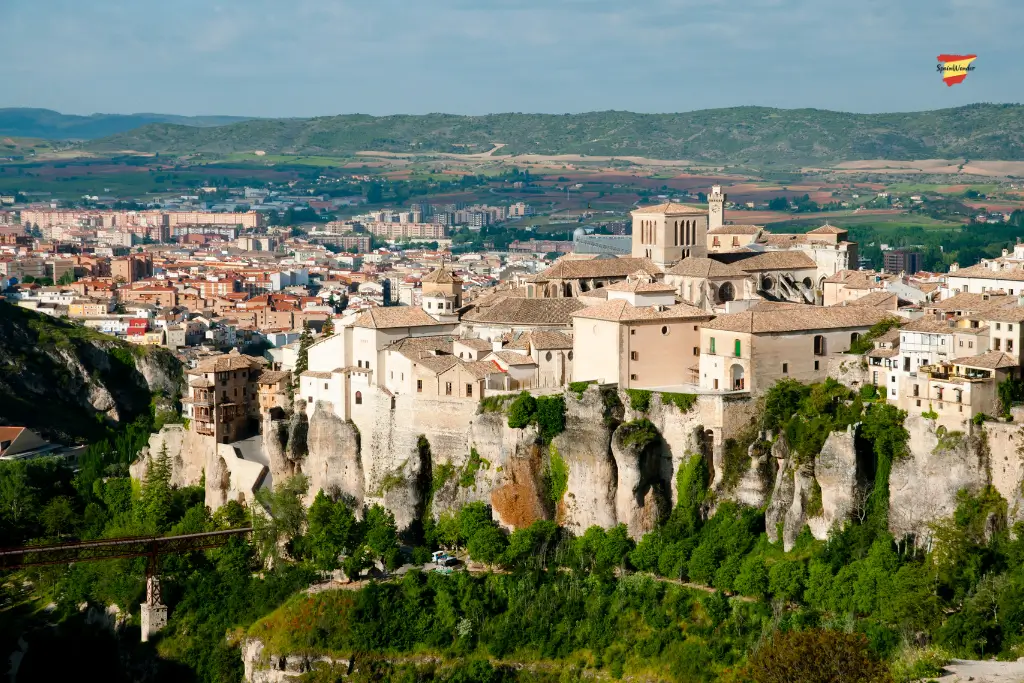
Enjoy Breathtaking Panoramic Landscapes
Begin at the Casas Colgadas—famous houses hanging over the Huécar Gorge. Their wooden balconies stretch out into the air, offering stunning views of the green valley below. Take photos from San Pablo Bridge at sunset, when the cliffs shine with a warm, golden glow.
Hike the Serranía de Cuenca trails for wilder mountains. Rugged paths reveal hidden waterfalls and limestone caves. Pack sturdy shoes—the terrain rewards those who explore beyond the village center.
Planning your trip? Spring and fall offer crisp skies perfect for photography. Local guides suggest the woodland trek known as Ruta de las Caras, strewn with enigmatic stone sculptures. Then, take a break at the cafés in Plaza Mayor and enjoy some Manchego cheese with marinated olives.
Cuenca proves that Spain’s magic isn’t just in grand cities. Here, every cliffside whispers tales of daring builders and artists who chased inspiration to the edge.
León: Gothic Architecture and Delightful Tapas Nights
Where stained glass paints sidewalks with kaleidoscope hues, León reveals Spain’s soul through stone and spice. This compact city packs Gothic grandeur into walkable streets, where every evening blooms into a culinary fiesta. The history here isn’t locked in museums—it’s served on small plates alongside crisp Albariño. It’s also one of the best places to travel in Spain if you’re chasing medieval beauty and authentic tapas culture without the crowds.
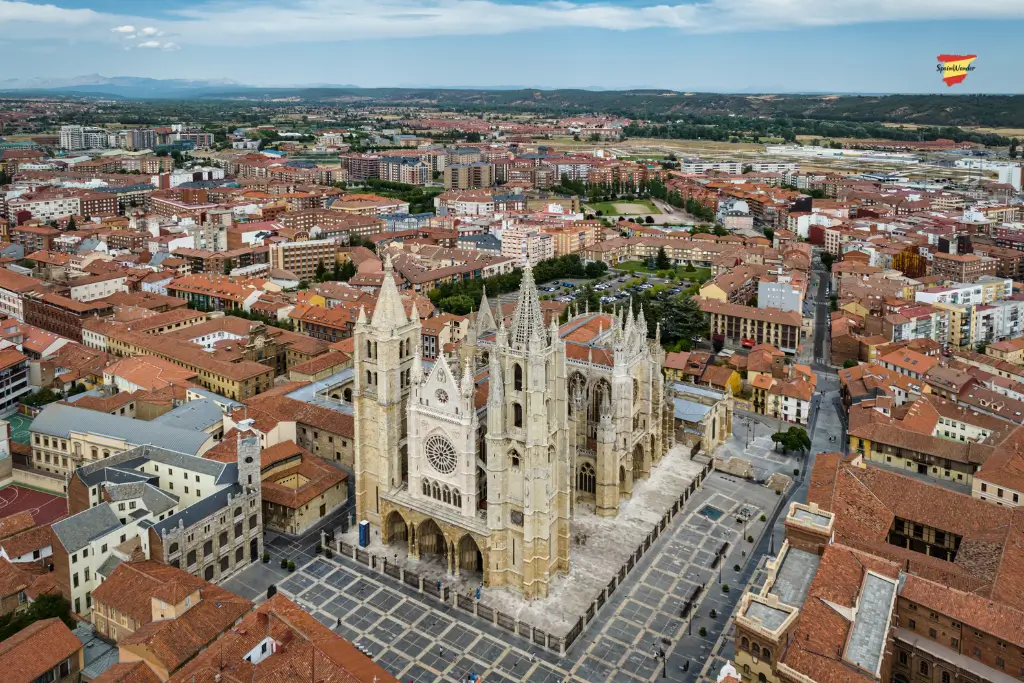
Admire the Stunning León Cathedral
Step into León Cathedral, where 125 stained-glass windows turn sunlight into a breathtaking display of colorful divine rainbows. This 13th-century masterpiece holds Europe’s finest collection of medieval glass—look for the “Botanical Window” depicting vines and mythical beasts. Climb the tower at dusk for golden-hour views over terracotta rooftops.
León’s cuisine shines after dark. Join locals on Calle Ancha for tapas crawls—each drink comes with complimentary bites like morcilla blood sausage or paprika-dusted octopus. Fuel daytime explorations at Mercado del Conde for artisan cheeses and smoky chorizo.
Make time for Museo de León. Its Mozarabic relics and Roman mosaics uncover deeper layers of history beyond the cathedral walls. Prefer nature? A quick day trip leads to Picos de Europa National Park, where emerald valleys meet snow-dusted peaks.
Whether you’re here for 24 hours or a week, León blends awe and appetite effortlessly. It’s a destination where Gothic arches frame modern joy—one bite-sized adventure at a time.
Salamanca: The Golden University Town
Step into a city where buildings glow like liquid honey under the Spanish sun. Salamanca’s golden sandstone walls hold secrets from 1218—the year its oldest university in Europe opened. It isn’t just a college town; it’s an open-air museum where Renaissance architecture meets youthful energy. As one of the best places to travel in Spain, Salamanca blends historic elegance with a vibrant student spirit that keeps its streets alive day and night.
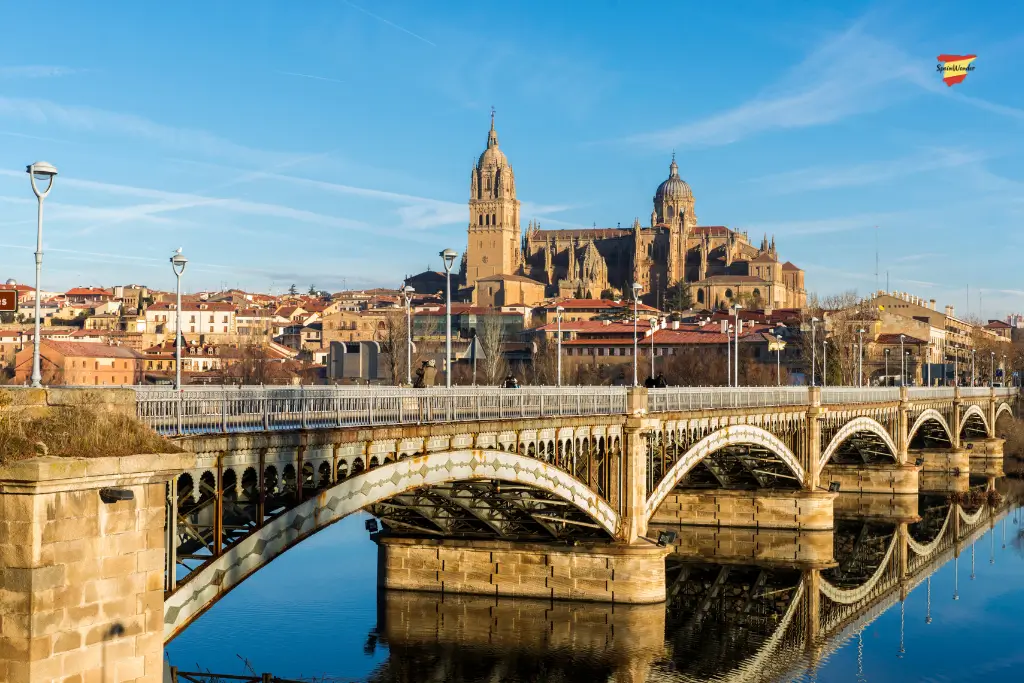
Experience Plateresque Architectural Wonders
Look up at the Universidad de Salamanca’s facade. Intricate carvings of skulls, saints, and hidden frogs cover its walls—a stone puzzle for sharp-eyed visitors. Nearby, Casa de las Conchas flaunts 300 scallop-shell carvings symbolizing pilgrimage. These houses aren’t mere buildings; they’re storytellers in sandstone.
Relax in the Bustling Plaza Mayor
Spain’s grandest square pulses with life. By day, students debate under Baroque arches. By night, lanterns cast a warm glow on couples sharing patatas bravas. Grab a café table early—the prime spots vanish faster than churros at breakfast. Local tip: Try hornazo, a savory meat pie, from nearby bakeries.
Wander beyond the main sights. Hidden courtyards reveal Gothic cloisters draped in ivy. For panoramic mountain views, climb the medieval cathedral towers at sunset. Salamanca proves that true charm lies in balancing grandeur with cozy corners—a place where history feels alive, not frozen.
San Sebastián: Gourmet Beachside Escapes
EEver wondered where golden sands meet Michelin-starred bites under a Basque sunset? San Sebastián shines with beaches as stunning as its food—a unique mix where ocean waves meet gourmet dishes like foie gras just steps away. This coastal city wears its UNESCO World Biosphere status lightly, pairing Belle Époque elegance with salt-kissed spontaneity. It’s undeniably one of the best places to travel in Spain for food lovers and seaside dreamers alike.
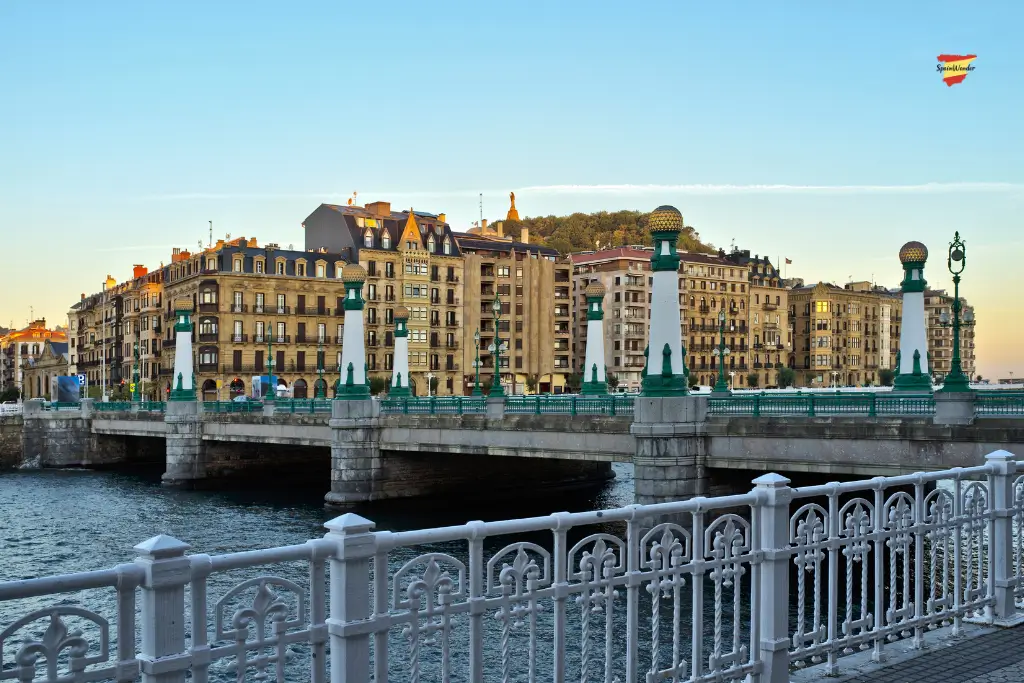
Savor Local Pintxos and Culinary Delights
La Concha Beach’s crescent shore invites barefoot strolls between swimming pool-front hotels and family-run taverns. In Parte Vieja’s cobblestone lanes, join locals jostling for pintxos—Basque tapas balancing smoked cod on pillowy bread. Bar counters overflow with anchovy-stuffed olives and seared skeleton steaks.
Coastal boulevards hide gems like Fuego Negro, where modernist bites meet vermouth on tap. Boat to Santa Clara’s small islands for island sensibilities; their pine-shaded paths provide expansive seaside views. The book stays near Ondarreta Beach to enjoy sunset dips and poolside gin tonics.
San Sebastián’s magic? It turns beachside life into haute cuisine without pretension. Mornings mean surfing Zurriola’s waves. Evenings? Sip Rioja where sand meets the sidewalk. Here, luxury isn’t gilded—it’s served on a toothpick with a side of crashing waves.
Granada: Unveil the Majesty of the Alhambra
What if palaces could whisper tales of sultans and kings through their walls? Granada’s Alhambra does just that—a UNESCO World Heritage site where geometric patterns and trickling fountains transport you to the 13th century. This hilltop fortress isn’t just about history; it’s a living lesson in how Islamic and Christian cultures shaped southern Spain. Granada stands proudly among the best places to travel in Spain, where past and present converge in breathtaking beauty.
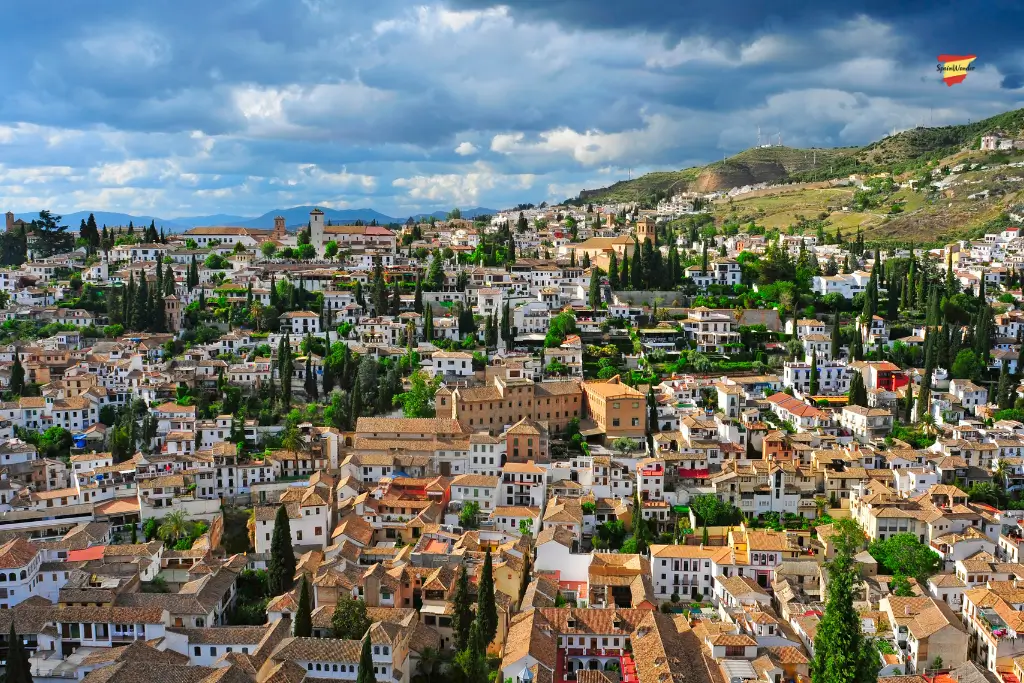
Explore the Splendor of Western Islamic Architecture
Marvel at the Nasrid Palaces’ honeycomb ceilings and stucco walls etched with Arabic poetry. The marble floors where the emirs once walked are shadowed by sunlight that filters through lattice screens. Climb up the Alcazaba fortress to enjoy wide views of Granada’s red rooftops with the snowy Sierra Nevada mountains in the background.
Local guides point out hidden symbols, such as the “Hand of Fatima” carved above doorways for protection and good luck.. Pro tip: Plan tickets months ahead. Late-afternoon slots let you see the Alhambra glow gold as daytrippers leave.
Relax in the Lush Generalife Gardens
Step into the Generalife’s emerald oasis, where water channels hum beside blooming rose bushes. These summer gardens were built for reflection—follow cypress-lined paths to hidden courtyards with mosaic benches. Be sure to see the Escalera del Agua—a unique staircase where water flows gently over stone rails, creating a soothing, rippling effect.
After exploring, wander Albayzín’s steep streets. Whitewashed houses with geranium-filled balconies lead to lookout points. At sunset, join locals at the San Nicolás viewpoint, where street musicians play flamenco beneath the glowing presence of the Alhambra.
Seville: Cultural Wonders and Festive Traditions
Feel the rhythm of castanets echoing through orange-scented plazas. Seville pulses with passion—a city where flamenco’s footwork matches the intricate patterns of Mudejar palaces. Here, Gothic spires tower over courtyards fragrant with jasmine, blending centuries of history into one vibrant present. As one of the best places to travel in Spain, Seville offers a sensory journey steeped in tradition, rhythm, and architectural splendor.
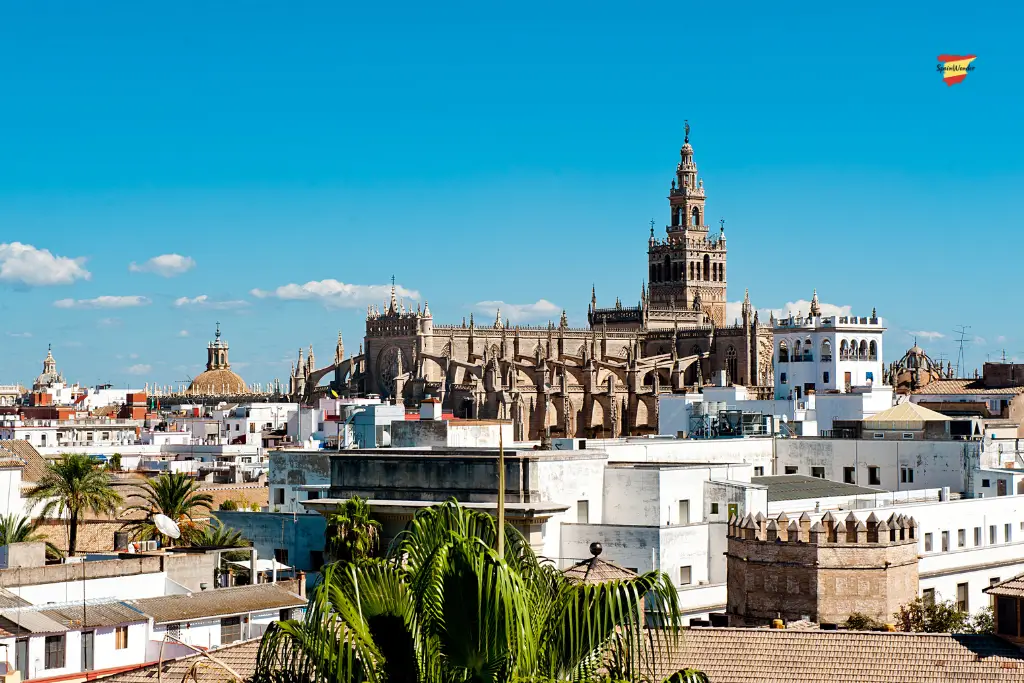
Discover the Harmony of Gothic and Mudejar Styles
Seville Cathedral will stop you mid-step. Its towering nave, the largest Gothic interior in the world, holds Columbus’ tomb beneath a golden altarpiece. Next door, the Royal Alcázar’s honeycombed arches and tranquil gardens reveal Moorish craftsmanship meeting Christian rule. Book tickets online to skip queues.
Navigating this destination is easy. Modern services like hop-on buses connect landmarks, while compact lanes invite wandering. Rent a bike near the colorful tiled alcoves in Plaza de España, each one showing a different region.
Time your visit during Semana Santa. Candlelit floats and saeta singers turn the streets into open-air shows. Afterward, follow the locals to Triana’s tapas bars and enjoy fried eggplant topped with sweet honey.
Seville’s charm? It lives in moments: sunset hues bouncing off the Giralda Tower or spontaneous applause erupting for a street dancer’s perfect zapateado. This is a city that doesn’t just welcome you—it pulls you into its fiery, flower-strewn heart.
Córdoba: Where Moorish and Christian Traditions Come Together
What if you could step into a building where time bends? Córdoba’s Mezquita does just that—a UNESCO World Heritage site where candy-striped arches stretch endlessly under vaulted Christian ceilings. This city doesn’t just display history; it lets you wander through layers of empires. As one of the best places to travel in Spain, Córdoba captivates with its seamless fusion of Moorish elegance and Christian legacy.
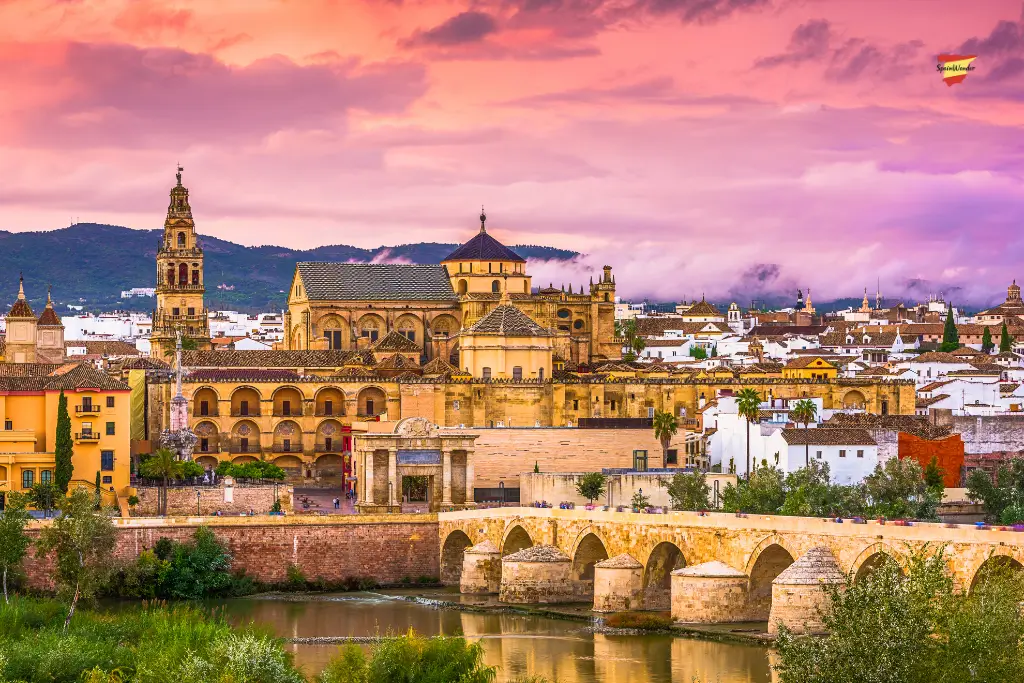
Walk Through the Legendary Mezquita
Enter the forest of columns. Over 850 jasper pillars support red-and-white arches—a hypnotic pattern crafted by 8th-century Umayyad builders. At the center, a Renaissance cathedral erupts through the roof. The clash of architecture feels surreal, like two worlds fused mid-collision.
Climb the bell tower for a beautiful view overlooking the Guadalquivir River. Look down to see the orange trees growing in the peaceful Patio de los Naranjos. Local tip: Visit at 8:30 AM when morning light paints the arches gold. Tickets sell fast—book online to skip lines.
Beyond the Mezquita, hidden gems await. Stroll the Jewish Quarter’s flower-draped alleys. Peek into courtyards competing in annual floral contests. For dinner, enjoy salmorejo—a creamy chilled tomato soup—at Taberna Sociedad de Plateros.
Plan your trip around May’s Patio Festival. Locals open private homes, revealing mosaic-tiled oases. Córdoba proves that true hidden gems aren’t just found—they’re felt in every shadow where East and West still whisper.
Best Places to Travel in Spain: Hidden Gems and Offbeat Destinations
Craving authenticity beyond crowded plazas? Some of the best places to travel in Spain are its lesser-known treasures — from cliffside hamlets to misty national parks — offering soul-stirring escapes. These spots reveal the country’s heartbeat through quiet moments: fishermen mending nets, shepherds guiding flocks, and generations-old recipes simmering in family kitchens.
Coastal Villages and Rustic Towns Await You
Discover Comillas on the Costa Brava, where Gaudí’s whimsical El Capricho villa hides among flower-covered cliffs. Further inland, Ronda’s Puente Nuevo bridge stretches across a deep gorge, so high that eagles soar below. Prefer islands? A World Heritage site, La Gomera’s laurel forests look like they haven’t changed much over time. These are some of the best places to travel in Spain if you’re seeking natural beauty and historical intrigue away from the crowds.
Forge your trail in Picos de Europa. Hike up to Bulnes, a peaceful village without cars, where stone houses sit nestled among the mountain peaks. Or kayak through Cíes Islands’ crystal beaches, dubbed “Galicia’s Caribbean.” These spots reward those who wander beyond guidebooks.
Insider Tips for an Authentic Spanish Experience
Book services early. Rural lodges like Paradores fill fast, especially near national parks. Use local trains—Renfe’s media distancia routes reveal landscapes missed by highways. Dine where menus lack English translations; that’s where abuelas serve secret recipe stews.
Conclusion
From Madrid’s art-packed streets to the cliffside villages of Costa Brava, Spain creates lasting memories. Whether you’re exploring a lively city or enjoying vermouth in a quiet, whitewashed town, every place has its own charm—with Moorish tiles, Gothic towers, and sunny plazas all part of the experience.
Thoughtful planning unlocks Spain’s layers. Use regional buses to reach hidden gems or book a day trip to mountain monasteries. Pack light for cobblestone lanes, and don’t overlook smaller towns—their family-run taverns and flower-draped courtyards often hold the richest stories.
As you plan, remember: Spain’s magic lies in contrasts. One moment, you’re marveling at Gaudí’s curves; the next, you’re diving into a seaside swimming pool as the Mediterranean glows. These best places to travel in Spain aren’t just destinations—they’re invitations to live boldly, taste deeply, and wander without hurry.
FAQ
When’s the ideal time to visit Spain for fewer crowds?
Spring (April–June) and fall (September–October) offer mild weather and fewer tourists. You’ll enjoy exploring UNESCO World Heritage sites like the Alhambra or Sagrada Família without peak-season crowds — some of the best places to travel in Spain during shoulder season.
Which cities are must-visits for first-time travelers?
Madrid, Barcelona, Seville, and Granada blend iconic architecture, vibrant culture, and culinary delights. These are among the best places to travel in Spain, offering unforgettable experiences like Madrid’s Golden Triangle of Art and Granada’s Alhambra.
What makes Barcelona’s architecture unique?
Antoni Gaudí’s modernist masterpieces, like Sagrada Família and Park Güell, define the city. The Gothic Quarter also reveals medieval charm, with narrow streets and hidden cafés — making Barcelona one of the best places to travel in Spain for design and history lovers.
How can I explore Spain’s cultural heritage beyond cities?
Visit coastal villages like Cadaqués for artistic inspiration or rustic towns like Cuenca, where cliffside “Hung Houses” offer breathtaking views. Toledo’s medieval streets also showcase Roman, Jewish, and Islamic influences — all ranking among the best places to travel in Spain for culture.
Is Spain easy to navigate without a car?
Yes! High-speed trains connect Madrid, Barcelona, and Seville efficiently. Buses and regional rail services reach smaller towns like Salamanca or León — both considered some of the best places to travel in Spain for those seeking walkable charm and vibrant nightlife.
Where can I combine beach relaxation with cultural trips?
San Sebastián in the Basque Country pairs golden beaches with gourmet pintxos bars. Costa Brava’s seaside towns, like those near Dalí’s former home, blend Mediterranean waters with artistic history — easily among the best places to travel in Spain for dual experiences.
Which destinations are UNESCO World Heritage Sites?
Córdoba’s Mezquita, Granada’s Alhambra, and the historic centers of Toledo and Cuenca are UNESCO-listed. These sites are not only historical highlights but also some of the best places to travel in Spain for architecture lovers.
What’s the best way to experience local cuisine?
Join tapas crawls in León’s Barrio Húmedo or savor fresh seafood in Galicia’s coastal towns. San Sebastián’s pintxos bars and Valencia’s paella spots also top the list of the best places to travel in Spain for food-focused itineraries.
Are there hidden gems worth adding to my itinerary?
Yes! Ronda’s cliffside bridges, Salamanca’s golden sandstone buildings, and the Picos de Europa National Park offer quieter yet stunning alternatives — true best places to travel in Spain for those venturing off the beaten path.
What’s a family-friendly activity in Spain?
Valencia’s City of Arts and Sciences features interactive museums and an oceanarium. Beaches in Costa del Sol or Tenerife’s volcanic landscapes also cater to all ages and are considered some of the best places to travel in Spain with kids.

